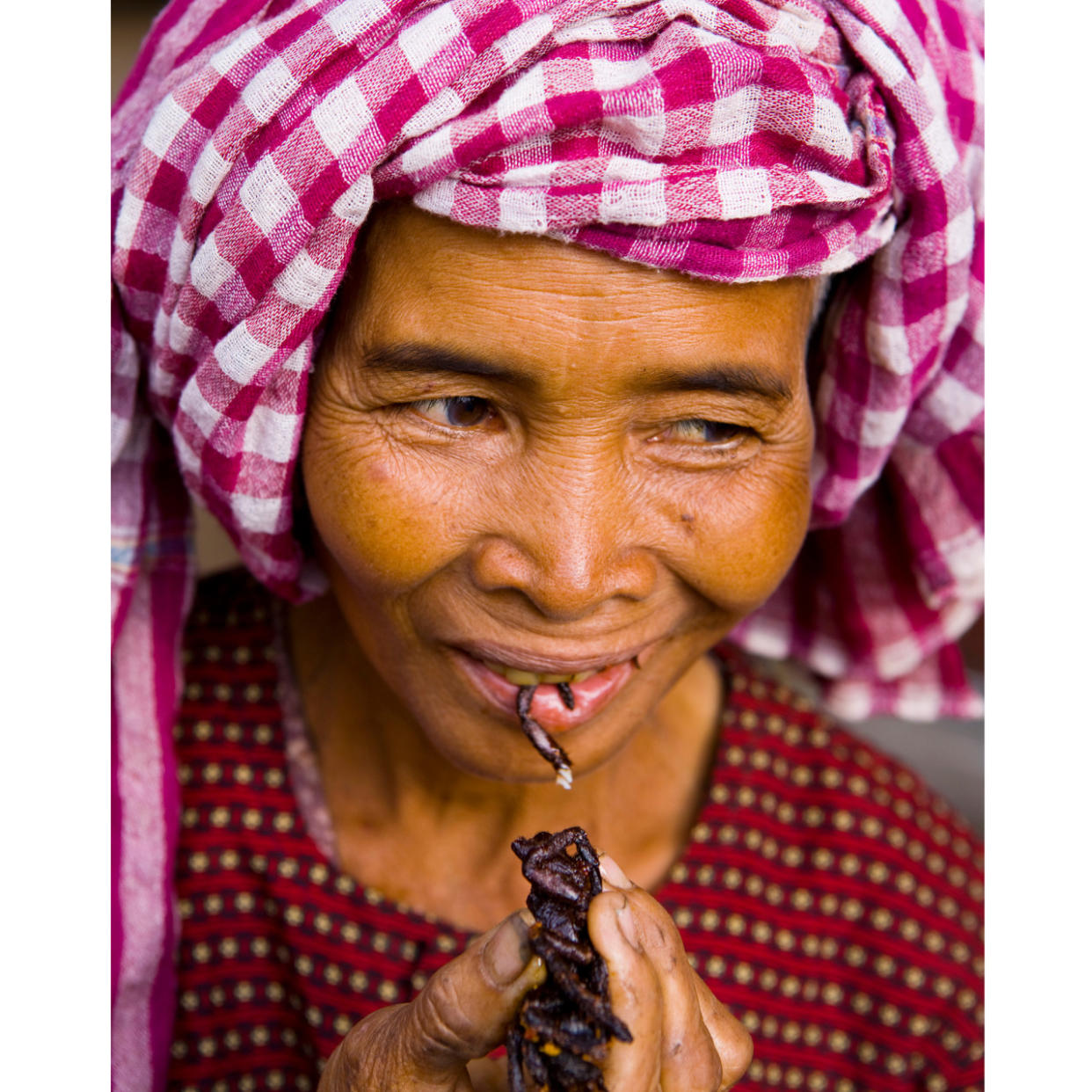How Eating Fried Tarantulas Saved Lives in Cambodia

© Peter Stuckings / Getty Images
Alive, tarantulas are vicious, hairy and poisonous. But deep-fried, many consider them an excellent snack. In Cambodia, fried tarantulas are a delicacy. Often rolled in sugar or garlic, the spiders are eaten by the handful out of street vendors’ carts by local residents and adventurous tourists alike. While this unusual food item may strike westerners as simply gross (Gordon Ramsay included), the custom has tragic, historic roots going back to the murderous reign of Pol Pot and his communist Khmer Rouge movement.
In 1953, Cambodia finally received independence from French rule, but following that high point, violence, civil war and outside intrusions—most notably that of the Vietnam War—racked the region. But all that turmoil would get worse on April 17, 1975, when the militaristic and communist Pol Pot–led Khmer Rouge marched into Cambodia’s capital city Phnom Penh, and overthrew the government.
After taking control, the Khmer Rouge forced Phnom Penh’s 2.5 million residents from their homes and into the surrounding hillsides and fields. Their hope was to turn the country, which they called Democratic Kampuchea, into a communist agrarian society cut off from the rest of the modern world. They killed most who disobeyed or sent them off to the notorious S-21 prison. For survivors, life was full of violence, back-breaking work and starvation. People had to find ways to survive and, for many, that meant finding food sources that were readily available in the countryside. Enter the tarantula.
It is not exactly clear who discovered that Thai Zebra tarantulas, or “apin” in Khmer, were edible. While the practice may date back to the late 19th century, it was during the time of the Khmer Rouge that tarantulas became part of the regular menu. Found in dens in heavily forested areas, the spiders were and are safe to eat and easy to prepare—the entire process from catching a spider to serving it can take only 10 minutes. Known for high protein, folic acid and zinc contents, the spiders sustained Cambodians who badly needed nourishment. And despite many westerners’ fears of them, tarantulas are simple to catch—so simple, in fact, that children still go into the forests unaccompanied to tease them out into the open. And while the tarantulas are poisonous, they aren’t deadly (many compare a tarantula bite to a bad wasp sting).
Today, you can find fried tarantulas on street corners throughout Cambodia, priced at only ten to twenty cents apiece. In the town of Skuon (about 50 miles north of Phnom Penh), the act of frying poisonous spiders has even become a tourist attraction. But it is worth remembering that this eight-legged arachnid helped many Cambodians stay alive during one of the worst political reigns on record. So eating one is not just part of some new bugs-as-food trend, it’s actually eating a part of history.
Related: These Are The Most Common Causes Of Food Poisoning
7 Workout Myths to Stop Believing
World’s Most Amazing Restaurants With A View
7 Foods You Didn’t Know You Could Freeze
9 She Sheds We Want To Live In Right This Second

